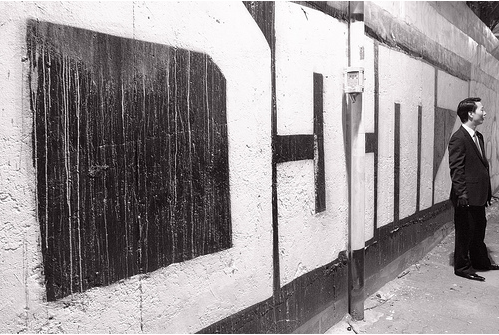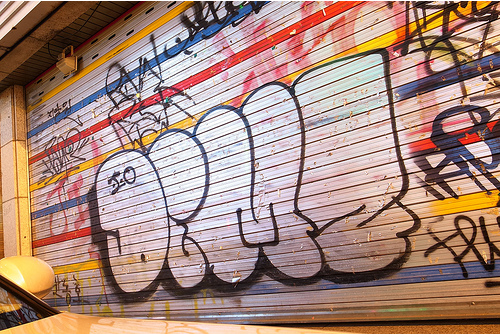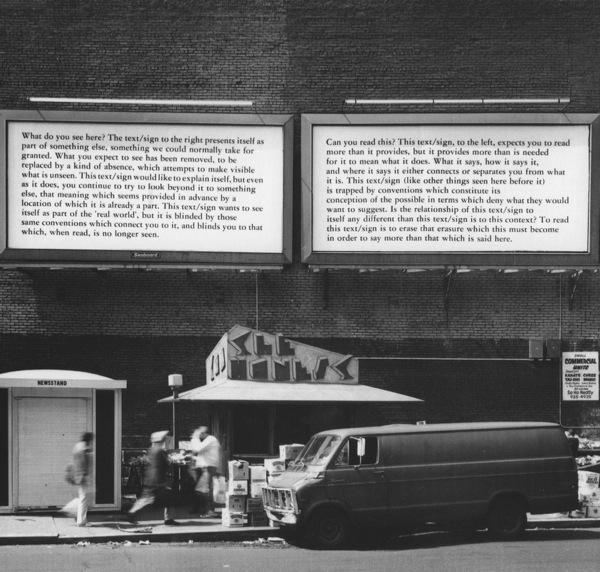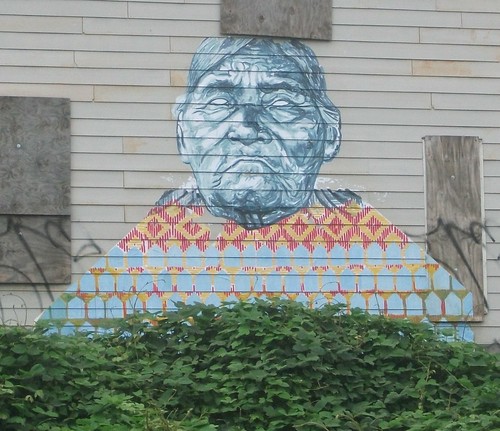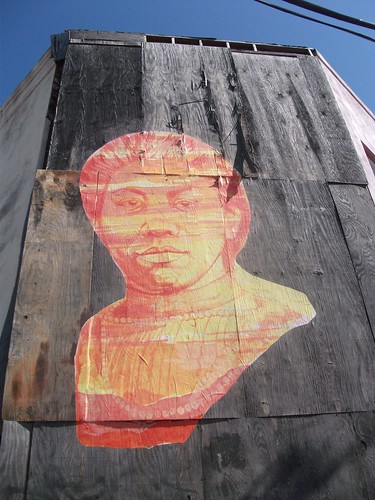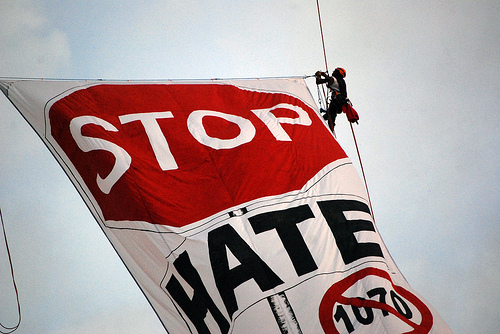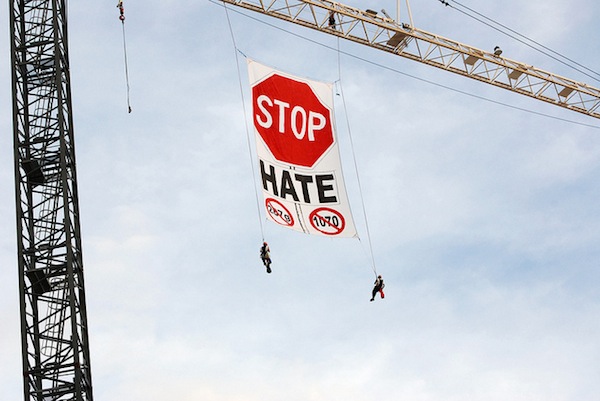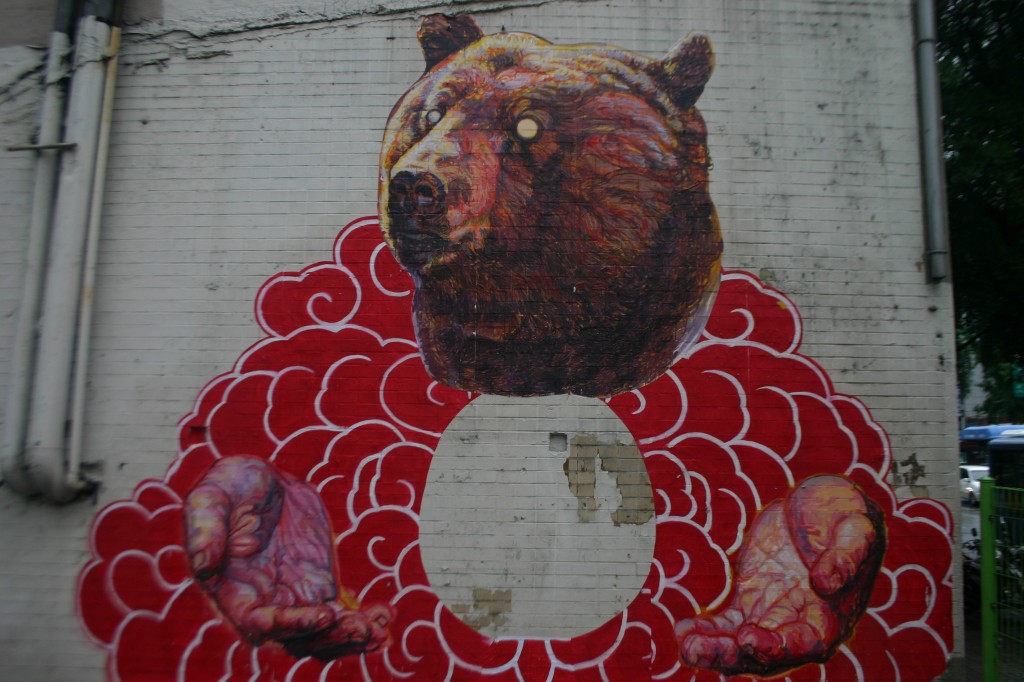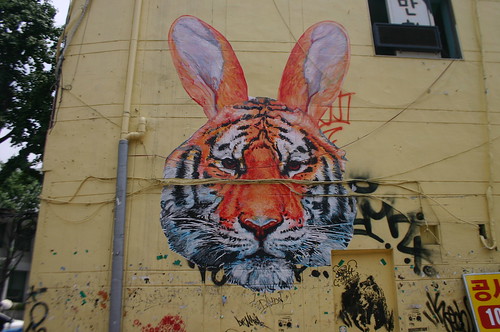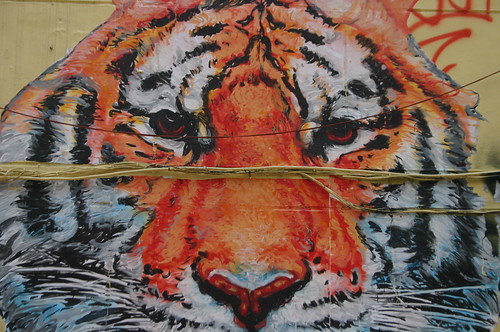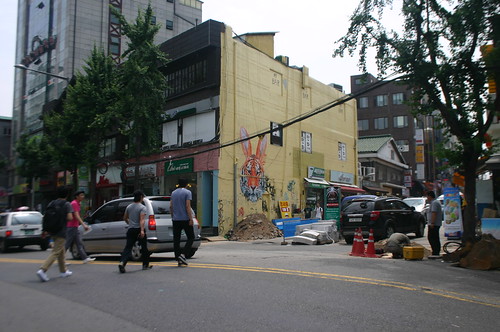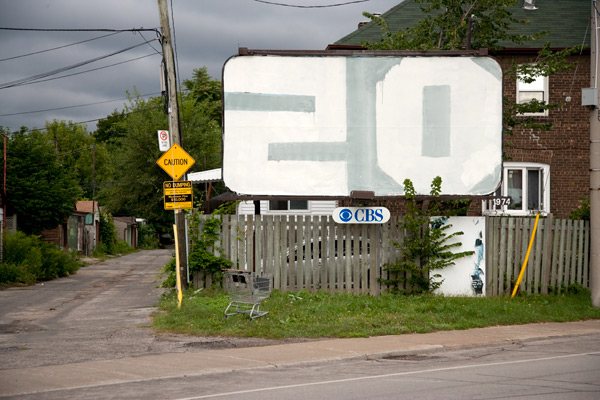
Jordan Seiler, organizer of the infamous NYSAT and bane to the advertising world, has just released the site to TOSAT, the Toronto Street Advertising Takeover Project. Attacking both street level back lit sites and elevated billboards, the project included more than 60 international artists whose work replaced over 90 ads. As always, these projects that Jordan has conducted are an important marriage between formal aspects of street art and activism. To learn more check out the website: http://www.publicadcampaign.com/tosat/
The Project description is as follows “With over half the worlds population now living in cities, our public spaces are playing an ever important role in the construction of our collective social identity. Outdoor advertising, with an interest in widely disseminating commercial ideals is finding its way deeper and deeper into these environments. While it is understood that commercial messages do not share our collective interests, we still do not question its use of our shared environments. In an effort to invigorate debate about how commercial interests are using public space and raise questions about how our communities desire to use those same spaces, non-violent civil disobedience projects like TOSAT engage the public in a dialogue of participation.”
“The TOSAT project is the most recent street advertising takeover project executed by PublicAdCampaign in Toronto. With over 60 artists and an international roster of contributors, this project provides a model for continued takeovers around the world. With each new city, a new set of on the ground collaborators will be necessary and many thanks must go out to PosterChild, Sean Martindale, and the DuSpa collective in Toronto for their unwavering support. As well these projects could not take place without the continued support of all the artists involved and we extend our deepest gratitude to all of those participants.”
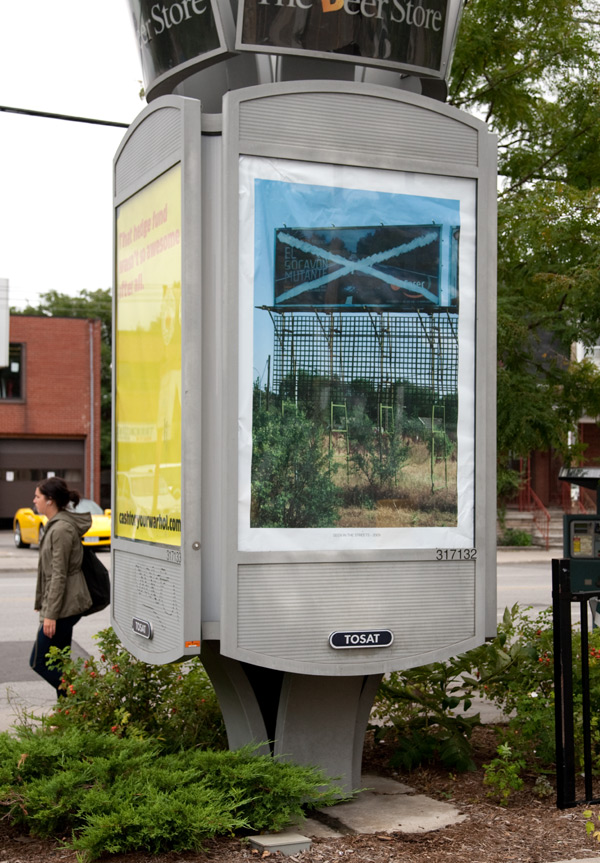
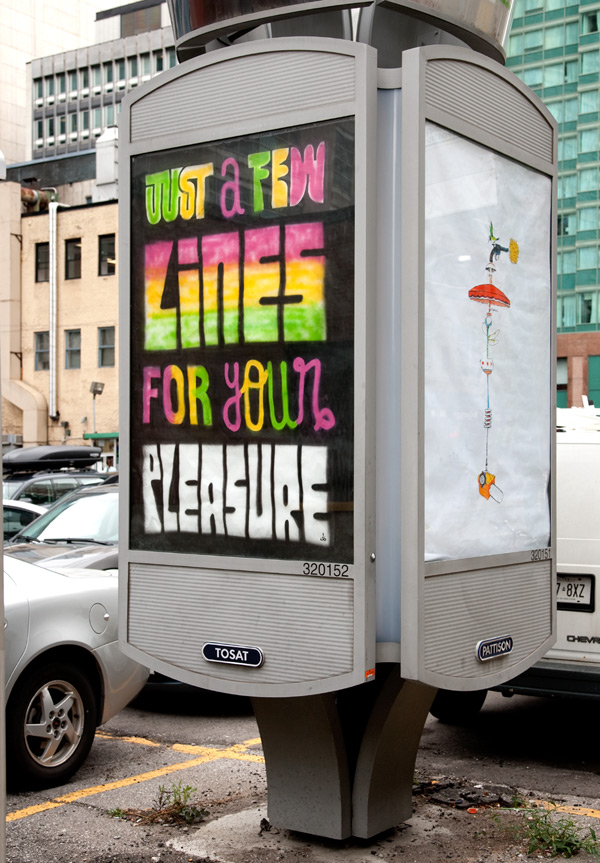
Photos courtesy of TOSAT

